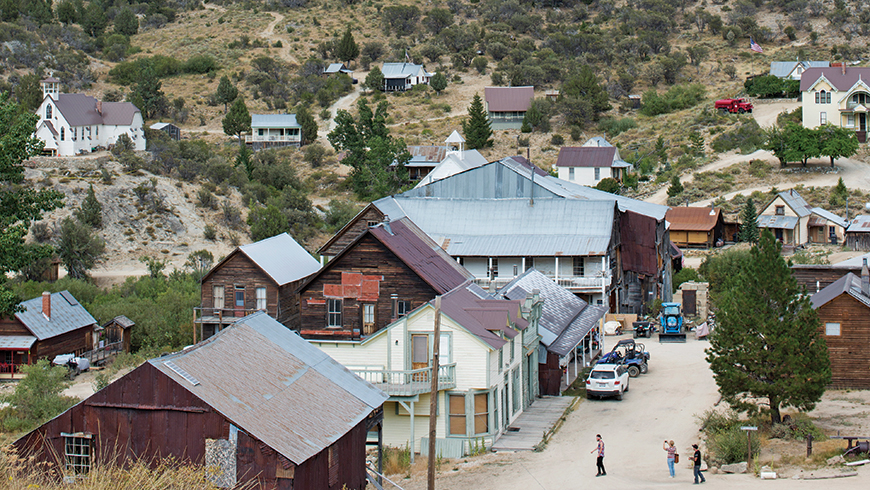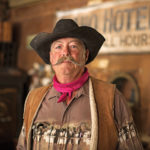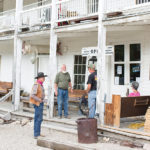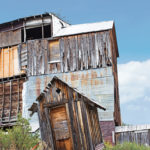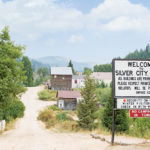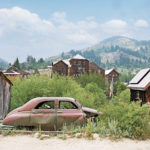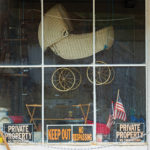It’s a story told throughout the West. At one time, Silver City was the Owyhee County seat and the center of mining in southwest Idaho. As the mines played out, it became a ghost town. But unlike many ghost towns of the Old West, Silver City is finding new life as people buy and restore the 19th-century buildings and even equip them with solar power and Internet connections.
Silver City’s History
Like so many places in the Old West, mining became the dominant industry in 1862, when silver and gold ore were discovered on War Eagle Mountain, in the Owyhee Mountains. (“Owyhee” is an early spelling of “Hawaii”; several early expeditions around the Pacific Northwest included Hawaiians, and a number of locations in the area are named Owyhee.) Silver City itself was founded in 1864 and became the county seat in 1866, when its population was around 5,000.
To give an idea of the richness of the area, look at a single mine, the Phillips Mine. Its first run, in January 1888, produced five bars of bullion, valued at more than $11,000. By June 1890, it generated 80 tons of ore, worth $100 to $300 a ton. Sadly, like most of the other mines in the area, Phillips stopped producing ore of that richness and the mine was dissolved in 1895, then demolished
in the 1990s.
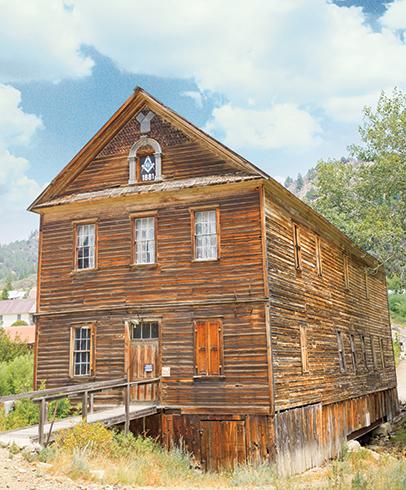
The Masonic Hall in Silver City
As the saying goes, there’s two ways to make money in mining, the second being supplying the miners. To get his share of the riches, Nampan William Dewey decided to build the Boise, Nampa & Owyhee Railway, a 30-mile line beginning in Nampa to serve Silver City. As part of that, he built the Guffey Bridge, now located at Melba’s Celebration Park. But mining in the area collapsed by 1912, and the railroad to Silver City was never completed past Murphy. While freight service continued for the farmers in the area until 1947, the tracks now terminate at Melba and the remaining line was torn up.
Silver City also spawned Idaho’s electrical industry. Swan Falls Dam, up the Snake River, was built in 1901 to provide electricity to the Silver City mines after the area ran out of wood for fuel. The three-phase electricity used by the dam was the testing ground for modern electricity because the alternating current advocated by Nikola Tesla was better able to traverse the distance between the dam and the city than the direct current supported by Thomas Edison. Like the railroads, the electricity had only recently become available when mining stopped.
After the mines played out, Silver City’s population diminished. The county seat moved to Murphy in 1934. While electricity continued to be available until the 1930s, at that point the system was shut down so the electrical equipment could be repurposed.
Silver City Today
For many Western ghost towns, the story would end there; the buildings would gradually collapse in on themselves, salvageable materials would be filched, and soon the town would be nothing more than a memory. But Silver City was different. For one thing, it also managed to escape the ravages of fire, which destroyed many a wooden mining town. And some families already settled there stayed.
One of those families was that of Clarence Orton, whose mother was born in Silver City in 1917. “She grew up here and went to school through the eighth grade,” when she went to Boise for high school, Orton said. His grandfather and grandmother were also born in Silver City in the 1800s. “I’ve got a lot of family history here,” he said. “I spent a lot of summers here. Now that I’m retired, I can spend more time.”
Silver City has also managed to escape the ravages of commercialism. This isn’t like Nevada’s Virginia City, with its Bucket o’ Blood saloon, prostitution museum, and people dressed in period costume. Silver City is more like a summer place, with just three businesses: a hotel/restaurant and two gift shops. And while the city gets plenty of tourists—particularly during its annual Open House weekend, typically two weeks after Labor Day—it’s not a tourist trap, residents said.
“In the summertime, Silver City is mostly a transient community,” Orton offered. “People come up on weekends or spend a week on vacation. There are a few of us, retired, who spend our whole time here. During the week, there might be five or six who are here full-time.” But it’s not a party town. “Everyone’s working on their houses,” he said, though the group may share a cocktail or two in a ritual they call “porch grazing.”
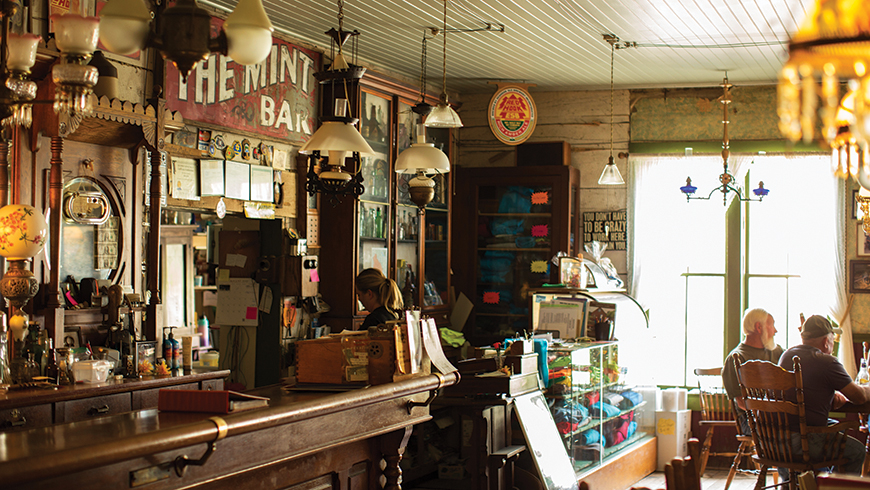
The bar in the Idaho Hotel
Part of that is thanks to the Owyhee County Commissioners, about the only government Silver City still has, other than a homeowners’ association. In the late 1980s, commissioners passed an ordinance to limit development and building in Silver City, requiring that it keep its 19th-century flavor. “You can only fix up the inside,” said Paul Nettleton, a cattle rancher who leads historic trail rides on the side. “Anything outside has to look like it did in the 18-whatevers.”
People also can’t construct new buildings. “What’s gone is gone,” Orton said. “What you see is what you get here.”
To buy a house in Silver City, first you have to find someone willing to sell one. “Houses don’t come up for sale very often, and they’re usually grabbed fairly fast,” typically $47,000 or $48,000 for a house that needs a lot of maintenance, Orton said.
“Silver City’s unique,” he added. “We really don’t want it ruined by commercial development. We want it to be a real, authentic Western town people can come into, and walk down the streets, and get a feel for what it was like in the 1800s.” His grandmother, for example, raised eight children using only wood for heat, he noted.
The city does have some modern conveniences. Several 19th-century wooden buildings are incongruously topped with solar panels, some just for lights, others with more. “I can run a microwave, a coffee pot, a hair dryer, a curling iron, and a vacuum,” Orton said. “Not all at one time,” he amended. His refrigerator, stove, and heaters run on propane.
War Eagle Mountain, which once housed mines, now serves as the site for a cell tower that not only provides residents and visitors with good cell phone reception, but gives them Internet access as well. “I can look up stuff whenever I want to,” Orton said. “It’s kind of handy.”
While Silver City is primarily a summer town nowadays, people do go there in the winter, when it typically gets four to six feet of snow annually, Nettleton said. “Silver City is a seasonal town,” he said. “Nobody stays, except we hire a watchman. There are people who go in and out in the winter on snowmobiles, but it’s not a situation where anyone permanently lives there.”
- Paul Nettleton is a cattle rancher and provides historic rides in the area.
Orton acted as the watchman one year until March 1 and was completely alone for six weeks due to rainstorms that washed out the roads. “I had enough food,” he said. “I had a lot of dry goods and frozen foods, and for myself, I didn’t need much.” Even with snowmobiles, it can be hard to get into Silver City in the winter due to snowdrifts on the summit. “I like the winters here, and get here as much as I can,” he said.
Some mining still goes on in the Silver City area, but it’s primarily recreational, Nettleton said. While he owns some mining claims, they were mostly owned by his father, he added. “Dad was great to give those old prospectors who wanted to sell their mines to go somewhere else,” he said. “He bought several properties that way.”
Silver City residents are proud of their heritage, and proud of what’s available in the town and what there is to see, Nettleton said. “It’s an old town that still looks like the 1880s,” he said. “When you visit there, you drop back in time.”
Visiting Silver City
Silver City is between Murphy, Idaho, and Jordan Valley, Oregon, and you can reach it from either side. All-wheel or 4-wheel drive is preferable but not required. From Murphy, take 78 South, turn right on Silver City Road, and it’s about 20 miles on a dirt road. From Jordan Valley, take Yturri Boulevard to Trout Creek Road, and it’s also about 20 miles on a dirt road. Roads are typically open from Memorial Day weekend into early October but can be muddy if it rains. As in any off-road travel, check for wildfires before heading out, make sure people know where you’re going, gas up, and take water and food. And dress appropriately for the weather—19th-century mining towns didn’t have air conditioning, and Silver City doesn’t, either.
“My air conditioning is, open the window,” said Clarence Orton, the third generation of his family to live there.
When you visit, remember these are people’s homes. “We’re adamant about our privacy, and we try to educate people that it’s all private property,” said Paul Nettleton, who owns property and a house. “Unless you are willing to let someone peek in your windows in Boise or Meridian, don’t peek in our windows.”

